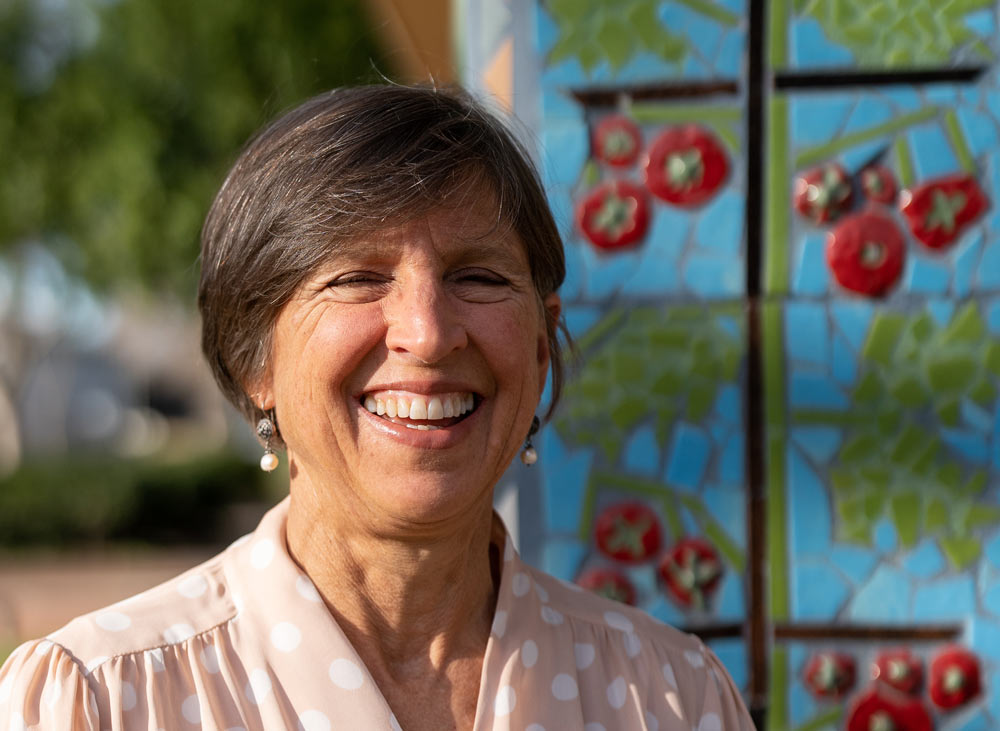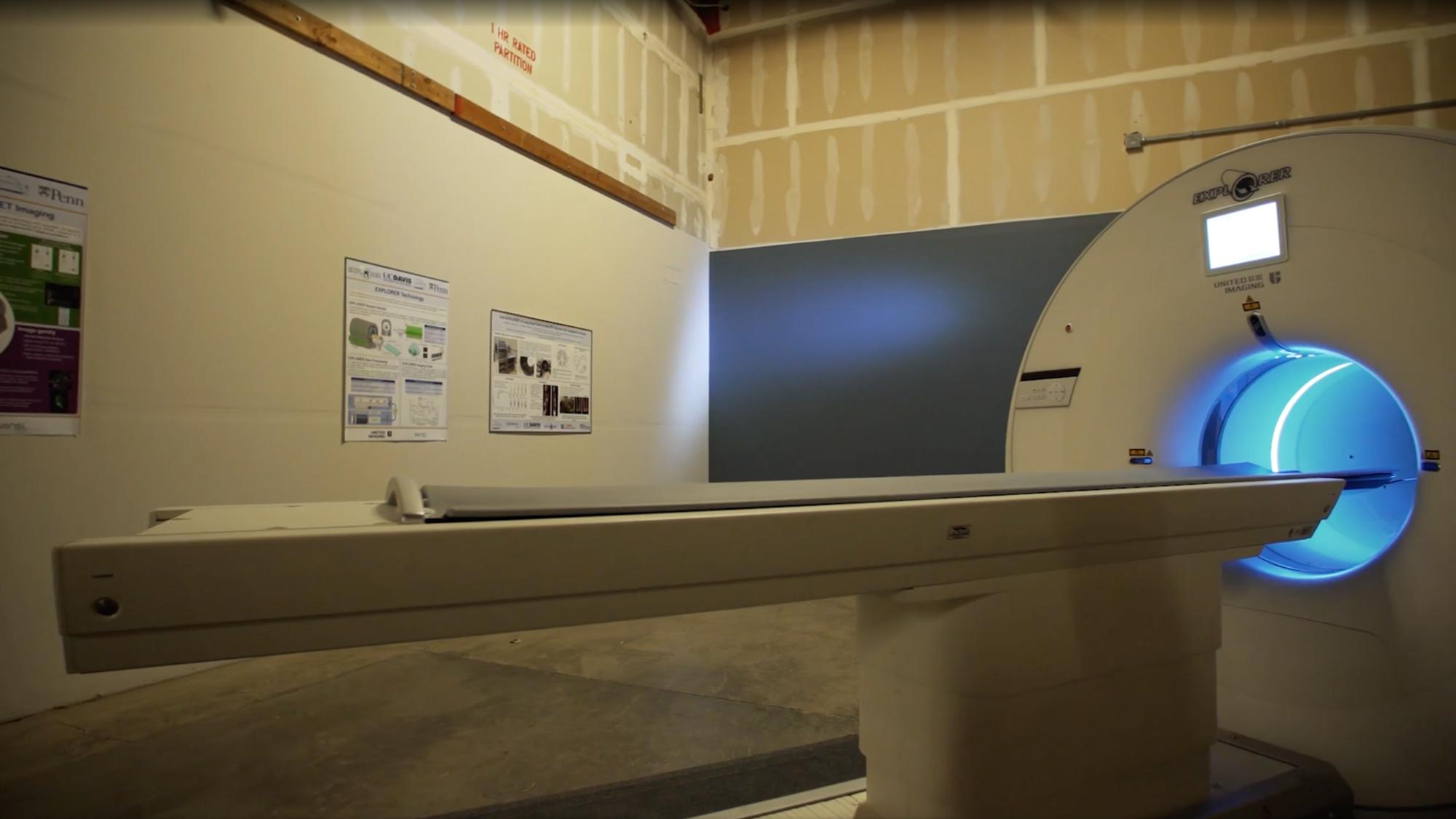If you eat strawberries, rice or beef, you can thank a researcher from the University of California, Davis. In partnership with the federal government, UC Davis scientists have made these foods tastier, more resistant to disease and drought, and better for the planet.
For people with ALS, Alzheimer’s disease and other conditions, that same partnership is leading to discoveries and therapies that help manage symptoms and may eventually lead to cures.
For decades, the federal government has relied on top-tier research universities like UC Davis to carry out laboratory research, clinical trials and fundamental science that advance human, animal and planetary health, make the food supply safer and healthier, and improve our understanding of the world.
Much of this research happens with little fanfare.
But since the new administration took office early this year, the federal government has retreated from the partnership that makes this research possible, endangering medical and scientific breakthroughs, economic growth and the United States’ leadership as the global scientific powerhouse. Dozens of federal grants already have been canceled, and the federal government has moved to cut administrative support for ongoing work.
“Critics of basic research call the work wasteful, suggesting it’s a luxury we can’t afford in a time of tight national budgets,” UC Davis Chancellor Gary S. May said in a recent “Chancell-ing” column. “However, this seemingly undirected exploration leads to unpredictable breakthroughs that create new industries and solve problems we didn't even know we had.”
At UC Davis, federal funding is the largest source of research support. According to a newly released report, the federal government accounted for about 47% of research funding to UC Davis in fiscal 2024-25, ahead of state and private industry funding.
Every dollar spent on research at UC Davis generates more than $2 for California's economy. The university’s total spending of $955 million on academic research generates $2.1 billion statewide, and 4,316 jobs in academic research lead to a total of 9,577 jobs statewide, according to an economic impact analysis released earlier this year.
In the last fiscal year, UC Davis had a surge in records of invention, or ROIs, filing 187, up from 140 the prior year. An ROI serves as the initial step in evaluating the potential for patents and commercialization.
Raising awareness of the importance of research
In February, UC Davis launched a campaign to increase public understanding of the value of university-led research. From Labs to Lives spotlights the researchers who are working to improve lives through their work across fields — from medicine to food, agriculture to technology.
“Without continued funding, we risk losing critical insights into how stress shapes family health, leaving communities vulnerable to the long-term effects of chronic stress,” said Rebecca Calisi Rodríguez, an associate professor in the College of Biological Sciences who studies how chronic stress affects parents’ brain health.
“If we stop funding research, we won’t just lose knowledge. We’ll lose the next generation of scientists who would have made the world a better place.”
What follows are just three examples of groundbreaking research at UC Davis made possible by federal funding.

When basic science solves global problems in agriculture
Basic science led Venkatesan Sundaresan, a distinguished professor in the Department of Plant Sciences and Department of Plant Biology at UC Davis, to unravel the secrets of apomixis. His efforts were rewarded with a 2024 Wolf Prize in Agriculture, considered by many the Nobel Prize for agriculture.
The Wolf Foundation selected Sundaresan for his groundbreaking molecular research on plant reproduction, which led to a method for producing clonal seeds from hybrid plants. The method mimics a process called apomixis that occurs naturally in many plants, including blackberries, dandelions and many citrus species. Apomixis allows plants to bypass sexual reproduction, resulting in plants that are genetically identical from one generation to the next.
Sundaresan and his team developed "synthetic apomixis." The method is a boon to agriculture because it simplifies generating high-yielding, hybrid crops without going through the costly process of crossing different strains. The team first developed the method in rice and have since demonstrated its efficacy in maize. Now, they’re in the process of planning field trials to test the method at a larger scale.

Federal Research Funding Helped UC Davis Develop a Rice Variety that Feeds Millions
With funding from the U.S. Department of Agriculture, UC Davis Professor Pamela Ronald and her collaborators discovered how a flood-resistant rice worked at the genetic level, then figured out how to introduce those genes into higher-yield varieties. By 2017, 6 million farmers across India and Bangladesh were growing the flood-resistant rice, creating a more reliable food source for tens of millions of people.
The research has funding from the National Science Foundation and the U.S. Department of Agriculture.
The breakthrough has enormous implications for farmers who can't afford to buy hybrid seed year after year, Sundaresan said.
“With these clonal hybrids, farmers can save some of their harvested seeds and replant them for the next year’s crop,” Sundaresan added. “This is very good news for smallholder farmers in developing countries.”
Sundaresan added that the concept of apomixis in a crop plant is decades old. Gurdev Khush, now an emeritus adjunct professor, organized a conference on apomixis for future rice breeding in 1994.
“The eventual realization of this dream," Sundaresan continued, "was built upon the foundation of a fundamental understanding of plant reproduction, achieved through the efforts of many talented lab members and collaborators over several years.”
In particular, Sundaresan said, Imtiyaz Khanday was pivotal to the project’s success. He credited Khanday’s “creativity and perseverance in the face of setbacks, and dedication in pursuit of the final goal.”
— Liana Wait
How diabetes research can improve children's brain health
A collaboration between UC Davis psychologist and pediatric endocrinologist looks at the connections between Type 1 diabetes and cognitive decline in children.
With a $2.5 million grant from the National Institute of Diabetes and Digestive and Kidney Diseases, Simona Ghetti, a professor of psychology in the College of Letters and Science, and Nicole Glaser, a pediatric endocrinologist at UC Davis Health, are building on their research on diabetic ketoacidosis in children.
“Well-controlled Type 1 diabetes does not necessarily result in cognitive difficulties,” said Ghetti, “but there are several complications of diabetes that might alter the brain metabolism to the point that it might really have long-term consequences.”

Ghetti and Glaser are leading the new study as part of a national research consortium funded by the National Institute of Diabetes and Digestive and Kidney Diseases. UC Davis is one of 13 sites that will follow about 1,000 children from several children’s hospitals in the U.S. for two years.
The research teams are diverse and will explore factors that range from variability in blood sugar levels and changes in markers of inflammation to whether children get enough sleep or have access to diabetes care. Each aspect of the project will take a different approach to understanding how Type 1 diabetes contributes to neurocognitive difficulties in children. This will be the first large-scale study to follow children with Type 1 diabetes over time to see how they progress in their neuro-cognitive development.
“There's a lot of different expertise and hopefully we will not miss anything that is important,” said Ghetti. “When you do a study this big, you don't want to miss anything because this is a one-time opportunity.”
Understanding diabetic ketoacidosis
Ghetti and Glaser are building on their years of collaborative research related to diabetic ketoacidosis. In 2020, they published the results of a randomized controlled trial that included nearly 800 children from 6 to 18 years old to compare cognition between diabetic children with and without diabetic ketoacidosis.
Children with who experienced a single episode of diabetic ketoacidosis had a slightly lower intelligence quotient. They also had more trouble with a task remembering the colors of items and with remembering and repeating numbers back in order.
“Once we better understand these factors, we can develop ways to address them to prevent cognitive decline,” said Glaser.
— Alex Russell
The world’s first total-body PET scanner
A decade ago, Ramsey Badawi, professor of biomedical engineering and radiology, and Simon Cherry, distinguished professor emeritus of biomedical engineering and radiology, were awarded $15.5 million as a Transformative Research Award from the National Institutes of Health, or NIH, to build the world’s first total-body positron emission tomography, or PET, scanner.
“The vision of the project is to solve two fundamental limitations of PET as it is currently practiced,” Cherry said at the time. “The first is to allow us to see the entire body all at once. The second huge advantage is that we’re collecting almost all of the available signal, which means we can acquire the images much faster or at a much lower radiation dose. That’s going to have some profound implications for how we use PET scanning in medicine and medical science.”
The duo went on to build the EXPLORER scanner, receiving approval from the Food and Drug Administration in 2018, that can capture a 3D picture of the whole body at once, allowing more accurate imaging while reducing radiation exposure. As the scan produces breathtaking image quality, the technology can be particularly helpful to researchers studying cancer that has spread beyond a single tumor site, inflammation, infection, immunological or metabolic disorders and many other diseases.
Using total-body PET scans to tackle long COVID

In August, researchers announced a $3.2 million grant over four years from the National Institute of Allergy and Infectious Diseases, part of the NIH, to use total-body PET imaging to get a better understanding of long COVID disease in collaboration with UC San Francisco.
About 1 in 10 COVID-19 survivors develop a range of long COVID symptoms that can last from months to years. How and why these symptoms develop isn’t completely known, but they have been linked to activated immune T cells getting into organs and tissues. Researchers also have linked long COVID to damage to the inner lining of blood vessels. These events can be related, because blood vessels become leaky when T cells are activated nearby, but may also be coincidental because leaky blood vessels allow more immune cells to leave the blood and enter tissues.
Negar Omidvari, assistant project scientist at the UC Davis Department of Biomedical Engineering and principal investigator on the grant, will use total-body PET technology, originally developed by Cherry and Badawi at UC Davis, and kinetic modeling to look at both processes simultaneously in patients with long COVID.
“Total Body PET has created, essentially, a whole new industry,” Badawi said in an interview for From Labs to Lives. “But without the kick-starting of the federal health care dollars to really turn that idea into practice, I’m not sure it would ever have happened.”
— Andy Fell
